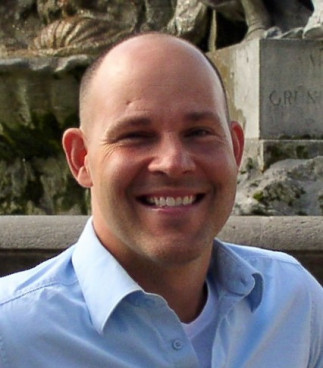Abstract:
In this talk I will describe how combining ultrafast lasers and electron microscopes in novel ways makes it possible to directly ‘watch’ fundamental processes in condensed matter that occur on the fastest timescales open to atomic motion [1-5]. By combining such measurements with complementary (and more conventional) spectroscopic techniques we can now develop structure-property relationships for materials under very far from equilibrium conditions, explore how we can use light to control the properties of materials [2,3], and unravel the complex interplay between charge, spin, orbital and lattice-structural degrees of freedom that gives rise to a material’s emergent macroscopic properties.
These transformative experimental tools are enabling researchers to tackle many critical research challenges at the frontier of our ability to control materials and to develop systems to capture, convert and store energy that will impact sustainability and advanced technologies. I will assume no familiarity with ultrafast lasers or electron microscopes and provide a range of recent examples.
[1] D. Filippetto et al, Reviews of Modern Physics 94 (2022) 045004.
[2] Morrison et al Science 346 (2014) 445
[2] Otto et al, PNAS, 116 (2019) 450
[3] Stern et al, Phys. Rev. B 97 (2018) 165416
[4] Rene de Cotret et al, Phys. Rev. B 100 (2019) 214115
[5] Rene de Cotret et al, PNAS, 119 (2022) e2113967119
Prof. Bradley Siwick (McGill University, Department of Physics and Department of Chemistry, Canada Research Chair (Tier 1): Dynamics in Complex Materials) leads both the Laboratory for Ultrafast Structural Dynamics and the Quantum Dynamics Laboratory, a $6.5M CFI Innovation fund project (opening Winter 2025). Over the past 20 years, Siwick has made a series of pioneering scientific contributions in developing the conceptual, technological and methodological foundations of ultrafast electron diffraction and scattering (UED/S), and its application to important problems in materials/condensed matter physics. Specifically, Siwick was responsible for generating the insights that solved the space-charge problem previously preventing high-brightness UED [J.Appl. Phys.92 (2002) 1643; cited 427]. Based on these insights, he has developed several new instrumentation technologies and methods, performing the first femtosecond time resolution electron diffraction experiments and “molecular movie”, which formed a cover story in Science magazine [Science 302 (2003) 1382; cited 1146, the most highly cited paper in this field]. Through CFI (CRC and LOF), NSERC, FRQNT funded work at McGill he developed RF electron pulse compression [J.Appl.Phys 102 (2007) 093501; cited 341, Appl.Phys.Lett. 101 (2012) 081901; cited 218], providing orders of magnitude improvement in electron beam brightness while simultaneously enhancing time resolution to 4 (2017) 051101]. This new instrumentation, recently patented (US Patent No. 11387070) and in the process of being commercialized, has enabled experiments that yielded deep new insights into the much debated metal-insulator transition in VO2 by directly watching the reorganization of the unit cell and separating lattice structural and electronic contributions for the first time on the femtosecond timescale [Science 346 (2014) 445; cited 616, PNAS, 116 (2019) 450; cited 120]. Most recently, the development of ultrafast electron diffuse scattering (UEDS) [Phys. Rev. B, 97 (2018) 165416; cited 117] has provided unprecedented time, momentum and mode resolved information on phonons in materials. Inelastic electron-phonon and phonon-phonon interactions [Phys. Rev. B 100 (2019) 214115], soft phonon physics [Sci. Adv. 7 (2021) eabf2810] and polaron formation [PNAS 119 (2022) e2113967119, npj Computational Materials 10 (2024) 178] can be directly visualized in momentum and time for the first time with this technique.
Since 2015 Siwick has given more than 60 invited talks at major international scientific meetings, Universities and National Laboratories. He has supervised more than 50 HQP at all levels, including 8 completed M.Sc and 8 completed Ph.Ds. Siwick is the CoDirector of the McGill Center for the Physics of Materials, holds a Canada Research Chair (Tier 1, Dynamics in Complex Materials), co-founded the Banff Meeting on Structural Dynamics (a major international forum for ultrafast science using x-rays and electrons) and serves as Associate Editor of Structural Dynamics, a joint AIP/ACA journal dedicated to the development of new experimental and theoretical approaches to study matter at extreme spatio-temporal resolution. Siwick recently completed a major review of the field [Reviews of Modern Physics 94 (2022) 045004].

